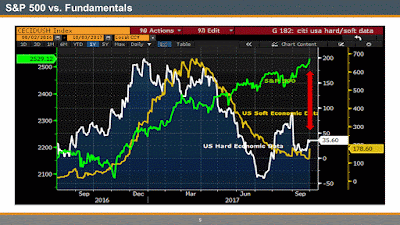What Are You Paying For And what Are you Getting In Return?
Congratulations to Mr. Pinn (above), who according to a recent Globe and Mail article on Robo-Advisors (by Clare O'Hara) discovered "that he was paying more than $20,000 a year in fees" (on a portfolio of $500,000) and "decided to fire his investment advisor of 18 years". The article goes on to suggest that he has now gone from paying fees of about 4.0% to fees closer to 0.4%.
Everybody needs to take a very hard look at what it costs you to invest and what it is that you get for the fees that you pay.
If "Robo" is the way you want to go, have at it. But it is important to remember that you will get what you pay for.
Don't expect to be high on the priority list from a client service perspective, because you are not paying for it (see my July 20 blog: The Robo-Advisor Option).
If you want a truly excellent client experience and a plan (created, monitored and administered by a Certified Financial Planning, CFP professional) that sets out and truly defines your very tailored investment strategy (with direct access to the managers who implement it), also monitored and adjusted as your circumstances change (and they will, because life is very dynamic) you can get it for a bit more (but not much more) than Mr. Pinn is paying for his Robo-experience. You certainly do not need to be paying 4% or even 1.5% to a financial / investment advisor who might stick you into a bunch of mutual funds (or even ETF's, as I wrote about in my most recent blog, last Wednesday).
After the volatility of early 2016, stock markets have been pretty good to investors (and volatility has fallen to new lows), but balanced portfolios have been broadsided by both bond market performance and the C$ strength, especially if you have global diversity (which you should have) and exposure to foreign currencies by virtue of that diversity.
Stick-handling that risk requires both experience and expertise. You probably (if you choose Mr. Pinn's path forward) want to ensure that your Robo portfolio managers have the required capability to handle that risk because as we know from history, volatility can jump when you least expect it and unprepared portfolio managers can get blindsided (and so can your portfolio).
I certainly do not want to take anything away from Mr. Pinn's wise decision to research his costs and make the tough decision to end the 18 year relationship with his over-priced advisor. I wish that every bank and large investment dealer client would be so brave.
However, the next step, choosing the most appropriate investment counsel for yourself and your family is also extremely important.
Make certain that you are getting what you need, relative to what you are paying for.
There are lots of alternate choices and portfolio management companies like High Rock, who fly beneath all the advertising hype out there, that are worth looking into.




















